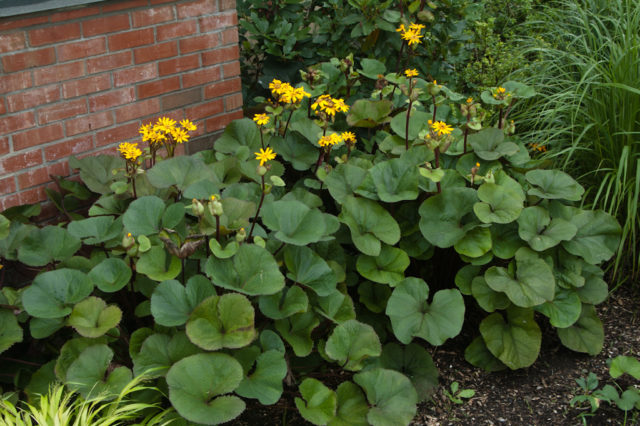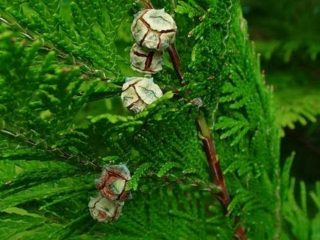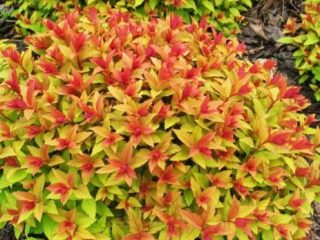Content
- 1 Features of buzulnik flowering
- 2 Buzulnik in landscape design
- 3 Peculiarities of breeding buzulnik
- 4 Growing buzulnik seedlings from seeds
- 5 Planting and caring for buzulnik in the garden
- 6 When and how to replant buzulnik
- 7 Rules of care
- 8 Diseases and pests
- 9 Collection and preparation of seeds
- 10 Conclusion
Buzulnik (Ligularia) is an original ornamental plant for decorating the local area. The culture looks great in shaded areas, near artificial reservoirs. Planting and caring for buzulnik is not characterized by complex agricultural technology.

Buzulnik bushes can be used as a tapeworm plant
Features of buzulnik flowering
Buzulnik flowering begins in July and continues until September. The plant produces tall flower stalks (up to 1 m in height) with original inflorescences.
Inflorescences can be different (depending on the variety): thyroid, spike-shaped, racemose.
Buzulnik flowers are shaped like baskets and resemble a classic chamomile in appearance. The tubular flowers are inconspicuous, most often yellow-brown in color.The color range of the marginal reed flowers can be different: from bright yellow to yellow-orange with a whitish or reddish tint.
Buzulnik flowers reach a diameter of up to 10 cm.
After budding is completed, fruits in the form of a tufted achene are formed on the peduncles.

The flowering of the crop is accompanied by an unobtrusive, light aroma
Buzulnik in landscape design
Professional photos of buzulnik in the garden allow us to conclude that in modern landscape design a powerful and luxurious ornamental bush has found wide application:
- as a solitary plant for single planting;
- for a tight fit;
- for planting in the background of a flower bed;
- as a border plant;
- for decorating tree trunks;
- for the design of lawns;
- for placement along the walls of houses, buildings, fences;
- for designing the shore of a water body.
Flowers and herbs with brighter colored foliage and inflorescences (mantle, daylily, hosta) are chosen as “neighbors” in the garden bed for buzulnik. In the photo there is a buzulnik in landscape design in a composition with clematis of various shades of purple, pink phlox, scarlet roses, and purple lilies.

Blooming ornamental plants with violet, red, purple, pink flowers look ideal next to the buzulnik.
Peculiarities of breeding buzulnik
Like many other representatives of the Astrov family, buzulnik reproduces by vegetative and seed methods. Young bushes obtained as a result of the second method begin to bloom after 3-4 years. Plants propagated by dividing rhizomes produce flower stalks the following summer after transplantation.

Very often, ornamental crops propagate by self-sowing
Propagation of buzulnik by seeds
Seed propagation of buzulnik can be spontaneous (self-seeding), seedlings and by sowing in open ground.
Experienced flower growers note that growing buzulnik from seeds collected at home has its “disadvantages”:
- homemade seeds do not always ripen and retain their germination properties;
- in most cases, plants lose the characteristics of the variety;
- Flowering of plants grown from home seeds occurs only 3-4 years after planting.
When propagated by seed without seedlings, seeds are sown in open ground in late autumn (late November) to ensure natural stratification. The material is buried 1.5 cm. Given the low germination percentage, buzulnik seeds should be sown in the ground quite close to each other. For the winter, crops are covered with peat, sawdust, straw or fallen leaves. In spring, the shelter is removed and the first shoots are shaded. The seedlings are thinned out twice (with an interval of 2 weeks), then (if necessary) transplanted to a permanent place of residence.
When propagated by seedlings, the seeds are stratified for 2 months, sown in special containers to a depth of 0.5 cm and germinated in greenhouse conditions under a film.
After stable warm weather has established, the seedlings are hardened off and transplanted into open ground.

To propagate buzulnik from seeds, it is best to use seeds purchased in specialized stores.
How to propagate buzulnik by dividing the bush
Dividing a bush or dividing the root system is the simplest and most productive way to propagate buzulnik, which has significant advantages over seed propagation:
- the varietal characteristics of the mother plant are completely preserved;
- all propagated daughter bushes form more lush and larger foliage, are characterized by abundant flowering and the brightest color of inflorescences and leaves;
- the bushes begin to produce flower stalks the following summer after rooting.
The division of the root system of buzulnik is carried out in early spring when the first leaves appear. You don’t have to dig up the mother bush completely (use a shovel to separate the parts of the required size containing viable shoots and buds).
For complete separation, the mother bush is carefully dug up along with a lump of earth. Using a shovel, plots with 2-3 healthy buds are separated. Wash them with a solution of potassium permanganate, remove rotten, soft, dry, damaged parts of the roots. The cut areas are sprinkled with wood ash. The plots are planted in prepared holes fertilized with organic matter.

The division of the buzulnik bush is carried out in early spring as the plant grows, at intervals of every 5-6 years.
Growing buzulnik seedlings from seeds
Growing buzulnik from seeds at home involves driving out seedlings. The material for sowing should be pre-stratified (treated with cold) for 2 months.
Sowing seeds for seedlings is carried out in the first ten days of March.
Shallow plastic or wooden boxes are chosen as containers.
To sow buzulnik seeds for seedlings, the soil mixture is prepared from a mixture of garden soil and mineral fertilizers.
Algorithm for sowing seeds for seedlings:
- shallow grooves (up to 0.5 cm) are thoroughly moistened;
- sow seeds;
- sprinkle with earth, press down a little;
- covered with glass or film to create a greenhouse effect.
After the emergence of seedlings, the shelter is removed, the seedlings are moistened as the top layer of soil in the container dries out.
Picking is not done because the plants are sensitive to transplants. When 2-3 permanent leaves appear, the seedlings are thinned out, leaving the strongest and healthiest seedlings.
2 weeks before transplanting into open ground, the seedlings are hardened off. At the end of May, young plants are transplanted into open ground. Small depressions in the ground are fertilized with humus, wood ash and superphosphate. The seedlings are placed in the holes, the soil is pressed around the bush, and watered abundantly.

The first time after moving the seedlings into open ground, the plants must be shaded during the daytime
Planting and caring for buzulnik in the garden
Garden buzulnik requires minimal effort and attention, since the plant has the highest level of stress resistance. The culture is unpretentious to the composition of the soil, can grow in the shade, and feels comfortable in places where water stagnates. However, planting the plant must be done with responsibility, since ligularia can grow in the same place for about 10 years. If you follow all the rules for preparing the soil for planting, the plants do not need feeding for the first 2-3 years. In the photo there is a buzulnik flower, planting and caring for which will allow you to get a magnificent ornamental plant in the flowerbed:

The unpretentious buzulnik does not require daily care
Recommended timing
Buzulnik should be planted in the spring:
- in early March, when several leaves appear on the mother plant, if necessary, divide the bush;
- at the end of May when moving seedlings into open ground.
Early spring is the most favorable time for seedlings and seedlings to adapt to a new location.When forced to replant in summer, the plant’s flower stalks and most of the leaves must be cut off.

Ligularia plots can be replanted in summer and autumn, but in spring the survival rate of bushes in a new location is much higher
Site selection and soil preparation
The place to place the buzulnik should be chosen in the shade, away from direct sunlight. This could be an area along the walls of architectural forms, fences, under trees. In open areas of flower beds, ligularia foliage loses its decorative properties, flower stalks become depleted and wither.
The permanent “place of residence” for the plant should not be too windy, since due to the rather high peduncles, shoots may break off in strong gusts of wind.
The ground under the buzulnik must be carefully dug up to a depth of 30 cm.
Planting holes for moving ligularia plots are formed shallow (up to 40 cm deep). The distance between individual bushes is at least 1 m.
The plants are undemanding to the composition of the soil. The culture adapts well to loose, nutritious soil that can effectively retain moisture. Experienced gardeners recommend adding to one square meter of garden soil:
- 1 bucket of humus;
- 2 cups wood ash;
- 1 cup superphosphate.
Such a nutritional composition will regulate the acidity level and promote local disinfection.

The best place for ligularia is the coastline of an artificial or natural reservoir
Landing algorithm
The agricultural technology for planting ligularia in open ground is universal:
- preparing planting holes measuring 40x40 cm at a distance of up to 1 m from each other;
- planting holes are filled with a prepared soil mixture of humus, charcoal and superphosphate;
- the plots are pre-treated with a solution of potassium permanganate, root sections with wood ash;
- seedlings are carefully placed in the holes, sprinkled with soil mixture, compacted;
- The bushes are watered abundantly at the roots.

When placed in a planting pit, healthy buds of the Liguria plot should be above the soil surface
When and how to replant buzulnik
Experienced flower growers agree that it is best to replant buzulnik in early spring, when the first leaves appear.
The strongest mother plants are selected for transplantation.
Ligularia bushes can be divided for transplantation in two ways:
- without digging the mother plant out of the ground;
- with complete removal of the mother bush from the ground.

Emergency transplantation of ligularia in summer can lead to too much height elongation of shoots, poor foliage growth, and lack of flowering
Rules of care
Ligularia is one of the most unpretentious garden plants. For the crop, it is enough to provide timely, abundant watering, regular fertilizing and protection from direct sunlight.

In shade and partial shade, buzulnik foliage can reach large sizes and delight with bright, rich colors.
Watering and fertilizing schedule
The watering schedule for buzulnik is directly dependent on the location of the crop:
- in shade or partial shade, plants need infrequent watering (once a week);
- near water bodies, watering can be eliminated;
- In sunny areas, ligularia needs daily watering in the morning or evening.
In the dry summer period, in addition to watering, buzulnik bushes require additional spraying.

Due to the fact that the root system is located in deep layers of soil, ligularia needs abundant watering once a week.
When transplanting plots or buzulnik seedlings into open ground, the holes are thoroughly fertilized with organic matter. Therefore, during the first two years of life, young bushes do not need fertilizer. Starting from 2-3 years of age, the feeding schedule consists of the following activities:
- in the spring you should feed the soil under each buzulnik bush with humus (about ½ bucket per plant) or complex preparations containing nitrogen;
- during the formation of flower stalks, plants can be fed with fertilizers containing potassium and phosphorus;
- before flowering, and then every 2 weeks until the end of the summer season, a liquid solution of mullein is injected under each bush in a ratio of 1:10;
- 2-3 times during the growing season, 1 tbsp is applied to each plant. wood ash.

The main need of ligularia is natural organic matter.
Loosening and weeding
Loosening and mulching the soil around the bushes allows not only to provide oxygen access to the root system, but also to retain moisture in the root space.
Weeding is a pressing issue exclusively in early spring.

After the bush grows, the powerful foliage of ligularia will “clog” weeds
Preparing for winter
After flowering ends, shoots with faded flowers are cut off. This allows the plant to grow more abundant foliage before cold weather sets in.
Most gardeners prefer not to cut off ligularia leaves for the winter. When withered, they cover the root system, which allows the bushes to “survive” frosts more comfortably.
In regions with harsh winter conditions, the space around the bush is mulched with humus.If there is a possibility of frost without snow, the plants are covered with straw, spruce branches, and branches.

Experienced gardeners recommend mulching shrubs in late autumn
Diseases and pests
Ligularia is a plant with strong immunity. Very rarely, a crop can be infected with powdery mildew.

When the first signs of a fungal disease appear, the bushes should be treated with a solution of potassium permanganate, Bordeaux mixture or modern fungicides
Slugs and snails are the main “enemies” of buzulnik. Various methods are used to control pests:
- manual collection of shellfish;
- treating the area around the bushes with dry tobacco and wood ash;
- use of superphosphate.

The modern drug “Thunderstorm” allows you to repel snails and slugs for a long time
Collection and preparation of seeds
At home, it is possible to grow buzulnik from seeds. To collect planting material, after the end of flowering, the most attractive peduncles are not cut off, but are left for final ripening.
The inflorescences are tied with gauze to prevent the seeds from spilling out. Before the onset of frost, the inflorescences are cut off and placed in room conditions to dry. After 2 weeks, the seeds are freed from the shell and winnowed. Reviews from gardeners about buzulnik allow us to conclude that seeds collected at home have a low germination rate.
Conclusion
Planting and caring for buzulnik at home does not have complex algorithms. Since ligularia is an unpretentious and stress-resistant crop, it can be grown everywhere. It is enough to follow the basic rules of planting and care, then the plant will delight you with abundant flowering and lush decorative foliage.








